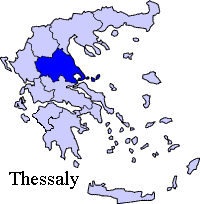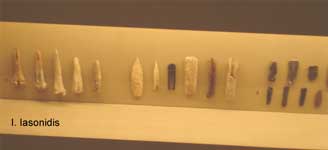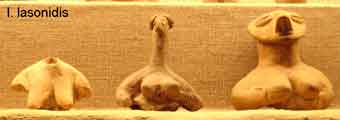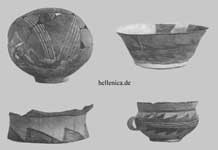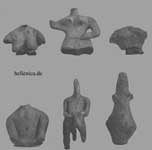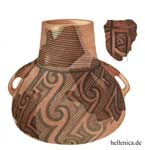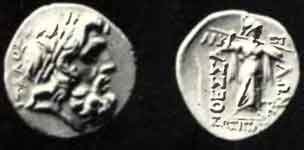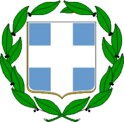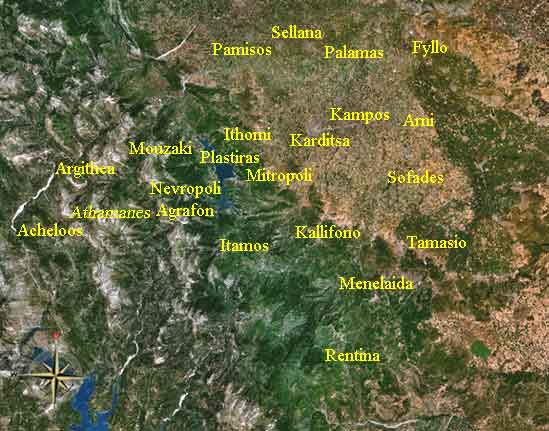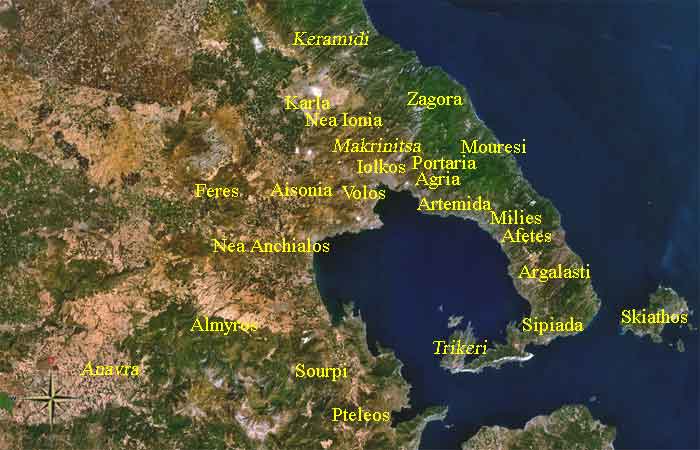|
|
Thessaly (Θεσσαλια; modern Greek Thessalía) is one of the 13 peripheries of Greece, and is further sub-divided into 4 prefectures. The capital of the periphery is Larissa. The prefecture lies in central Greece and borders Macedonia on the north, Epirus on the west, Sterea Hellas or Central Greece on the south and the Aegean Sea on the east. Geography Its geography consists of a ring of mountains surrounding a central plain: Trikala and Larissa lowlands. It has a distinct summer and winter season, with summer rains augmenting the fertility of the plains. This has led to Thessaly occasionally being called the breadbasket of Greece. The region is well delineated by topographical boundaries. The Khásia and Cambunian mountains lie to the north, the Olympus massif to the northeast. To the west lies the Pindus mountain range, to the southeast the coastal ranges of Óssa and Pelion. Several tributaries of the Pineios river flow through the region. Transport There are a number of highways and the main railway from Athens to Thessaloniki (Salonika) crosses Thessaly. History
Thessaly was home to an extensive Neolithic culture around 2500 BC. Mycenaean settlements have also been discovered, for example at the sites of Iolcos, Dimini and Sesklo (near Volos). Later, in ancient Greek times, the lowlands of Thessaly became the home of baronial families, such as the Aleuads of Larissa or the Scopads of Crannon. These baronial families organized a federation across the Thessaly region, later went on to control the Amphictyonic League in northern Greece. The Thessalians were renowned for their cavalry.
From the six generations of Thessalians Daochos monument
Thessalian double Victoriatus, Zeus Head with text ITALOS, 196/146 BC During the Greco-Persian Wars the Aleuads joined the Persians. In the 4th century BC Thessaly became dependent on Macedon and many served as vassals. In 148 BC the Romans formally incorporated Thessaly into the province of Macedonia, but in AD 300 Thessaly was made a separate province with its capital at Larissa. It remained as a part of the east Roman empire until the 13th century, when large portions of it were controlled by Vlach herdsmen (see Great Walachia).
Main article: Medieval Thessaly In the aftermath of the Fourth Crusade Thessaly fell under the control of the Kingdom of Thessalonica, but in 1215 it was coquered by Theodore Komnenos Doukas and became one of the independent territories governed by that family. The dynasty ended in 1318 and was followed by a period of Byzantine and Serbian domination. After another period of independence, Thessaly was conquered by the Ottoman Empire in 1394. In 1881 the Ottoman Empire ceded most of Thessaly to Greece.
Administration Thessaly is divided into 4 prefectures: Kardhitsa
 |
|||||||||||||||||||||||||||||||||
|
|
